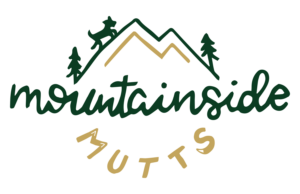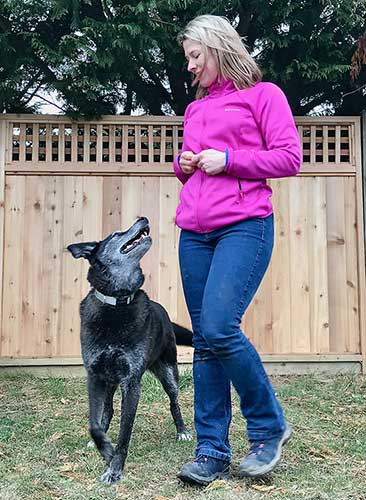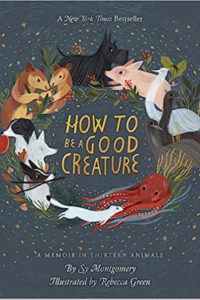 Santa used to leave me a “Life’s Little Instruction Book” in my Christmas stocking each year. I loved them. Short enough to read really quickly, and some obvious pearls of wisdom from people who’d been around longer than myself. That’s not to say I appreciated all of the words of advice – until later. On reflection, I could have learned so much more from those books. Sometimes life’s lessons reveal themself much more clearly on reflection. And so it was said to be for Sy Montgomery, the author of “How to be a Good Creature: A Memoir in 13 Animals – the subject of discussion at our June meeting. Mountainside Mutts Book Club Review rating: 🦴🦴🦴
Santa used to leave me a “Life’s Little Instruction Book” in my Christmas stocking each year. I loved them. Short enough to read really quickly, and some obvious pearls of wisdom from people who’d been around longer than myself. That’s not to say I appreciated all of the words of advice – until later. On reflection, I could have learned so much more from those books. Sometimes life’s lessons reveal themself much more clearly on reflection. And so it was said to be for Sy Montgomery, the author of “How to be a Good Creature: A Memoir in 13 Animals – the subject of discussion at our June meeting. Mountainside Mutts Book Club Review rating: 🦴🦴🦴
Over the course of some 10 chapters/200 pages, Montgomery shares the lessons she’s learned from some of the creatures she’s encountered in her life. From her childhood dog to emus and an octopus, Sy delves into the wisdom picked up from other creatures throughout her life. A Buddha-like pig with a lust for everything life offered, and a total appreciation of the now. One species but two very different dogs with completely different personalities. Tree kangaroos with lessons about grief and the magic/mystery of life.
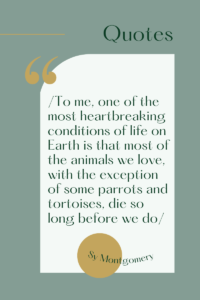 The book may be unappealing to those who are uncomfortable with anthropomorphism, but otherwise, perhaps the biggest criticism is that there’s a 14th creature referenced throughout the book – the author’s mother. It seems more than any other creature, lessons learned from her greatly affected the author’s life – admittedly not so much as things to emulate and repeat, but rather as lessons learned from others’ mistakes. Still, you don’t have to agree with everyone or even like them to pick up valuable lessons from them. So perhaps the better title would be “A Memoir in 14 Animals” rather than unlucky 13.
The book may be unappealing to those who are uncomfortable with anthropomorphism, but otherwise, perhaps the biggest criticism is that there’s a 14th creature referenced throughout the book – the author’s mother. It seems more than any other creature, lessons learned from her greatly affected the author’s life – admittedly not so much as things to emulate and repeat, but rather as lessons learned from others’ mistakes. Still, you don’t have to agree with everyone or even like them to pick up valuable lessons from them. So perhaps the better title would be “A Memoir in 14 Animals” rather than unlucky 13.
Members of our club were in agreement that writing the book was cathartic for the author – her way of dealing with bigger subjects and larger issues in her life. We had many questions of our own for the author who clearly felt a special bond with animals. Some of us also feel a deeper connection with them than with people. A self-proclaimed group of introverts. Frequently labeled as “too sensitive”, do we feel things that others don’t? Do we feel things on a bigger scale?
We were in consensus that animals help us develop much-needed traits like patience, being present, empathy, and understanding of the all too heartbreaking reality that life is finite. We all felt that the book ended too abruptly – like the author was up against a deadline and just wrapped things up. An unsatisfactory conclusion.
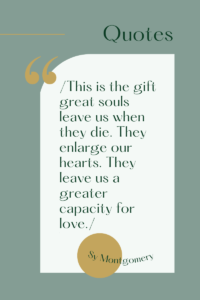 Where we weren’t all in agreement however was whether this was a truly authentic journey by the author, or snippets of bigger books she had either written or planned to write – a way to make the most use of material destined for other purposes. In an age of AI, would there be anything wrong with recycling your own material? If the author was trying to share something that to her was truly authentic, that wasn’t felt by all of her readers. Why? What is it that makes one person’s beliefs understood and appreciated by another as being genuine yet dismissed by someone else? Is it a shared experience? An “I know what you mean” moment? Or is there something less tangible? Do some of us just see the world in a different way?
Where we weren’t all in agreement however was whether this was a truly authentic journey by the author, or snippets of bigger books she had either written or planned to write – a way to make the most use of material destined for other purposes. In an age of AI, would there be anything wrong with recycling your own material? If the author was trying to share something that to her was truly authentic, that wasn’t felt by all of her readers. Why? What is it that makes one person’s beliefs understood and appreciated by another as being genuine yet dismissed by someone else? Is it a shared experience? An “I know what you mean” moment? Or is there something less tangible? Do some of us just see the world in a different way?
How to Be a good Creature was not a book enjoyed by all in the Mountainside Mutts Book Club, but it certainly got us thinking and chatting. I consider that a success.
Our book club meets approximately every 6 weeks. What unites our members is a love for the animals around us.
The next selection for the Mountainside Mutts Book Club is: What Would Animals Say If We Asked the Right Questions: by Vinciane Despret and we’ll be meeting on 23 August. We’d love to have you join the discussion. Email: als@mountainsidemutts.com for further information.
In the meantime, have you read “How to Be a Good Creature” already? If so, what were your thoughts on the book?
